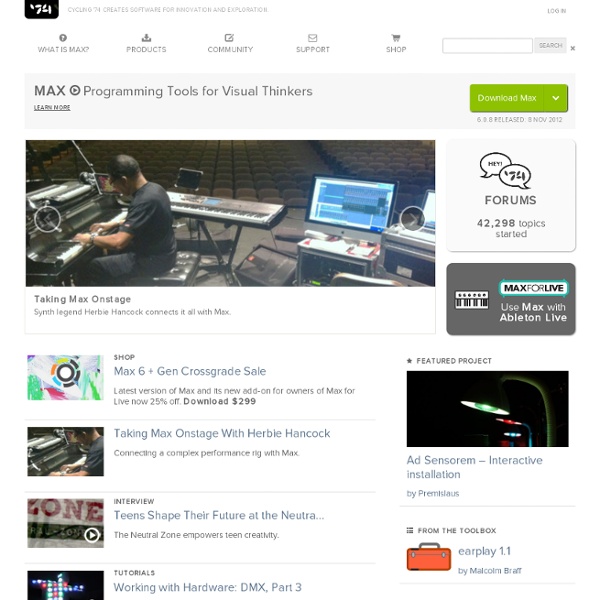



Creative Reverb Techniques You are probably used to creating your beats, bass and synth sounds, then creating a reverb bus channel, and applying some of that reverb effect to your individual instruments. Sure, this is a nice way to create a room effect that is coherent amongst your instruments and sounds, but what about using some creative techniques with reverb? I am going to show you how to use reverb a little differently to create interesting processing effects with your tracks. I will be using Ableton, but these same principles can be applied in other DAWs as well. Using cues, timelines and VJ software for performances These days as a part of the Obscura crew I am ofting doing visual shows that have more in common with theatre productions than traditional VJing. Often there is some sort of script for a show or a piece of music that is rehearsed. For these types of jobs I have found good use for the application called QLab which is great for triggering a pre planned sequence of events. Actually the whole point of QLab is to line up a sequence of audio, video files or other types of events and being able to trigger them with a simple ‘Go’ button at the exact right time during the show. QLab was originally developed with audio in mind and has later been extended with video features so it does not have many features as VJ applications when it comes to live manipulations of images and video. But for those of us who sometimes wish for a timeline in our favorite VJ application, QLab may be an option if you set it up to run alongside your VJ app.
Syphon Syphon is an open source Mac OS X technology that allows applications to share frames - full frame rate video or stills - with one another in realtime. Now you can leverage the expressive power of a plethora of tools to mix, mash, edit, sample, texture-map, synthesize, and present your imagery using the best tool for each part of the job. Syphon gives you flexibility to break out of single-app solutions and mix creative applications to suit your needs. Videos: Syphon Overview | Quartz Composer Integration | FreeFrame GL Integration | Syphon 2K Jitter Demo | Syphon Vimeo Group 17 Ableton Tutorials Ableton Live is a DAW that's not only good at producing music, but it's also useful when you're playing live. It's available for both PCs and Macs, so just about anyone can use the software. One of Live's unique features is its session view. This is a non-linear grid for recording and playing your music ideas in any order.
MIDI Over Network I’m a big fan of networking, connectivity and remote control. I like it when I can get computers to do the boring stuff so I get to do the fun stuff. This post is another installment in that series. Today, we’re talking about how to send MIDI commands over a network. I’ll leave the what and why for the next post, and today focus on the how.
MIDI over a Network MIDI over a Network OS X Tiger includes a useful new feature: you can now send MIDI between computers over an ordinary network. You don’t need any additional hardware, and the connection appears as just one more ordinary MIDI port available to your applications. It’s a simple and effective way to have multiple laptop performers share control information, or to coordinate multiple computers during a live show. Before starting this tutorial, you’ll need at least two OS X Tiger Macs that share a network. If you have WiFi, you can follow this tutorial first to create a direct wireless connection, without going through a router.
Hardware Synthesizers in Ableton Live Here is a quick 2 Minute Ableton Live Tip about how to route external instruments into Live. Once in Ableton, you can sequence them and add plenty of good effects. In the video I use the Synthboy by Ninstrument. It turns Nintendo’s Gameboy into a 5 channel Synthesizer; just listen to the 8 bit glory it unleashes! Big thanks to Chris for lending me one to play around with. Much more on Synthboy coming soon! Granulator by Robert Henke Granulator II is a Max4Live synthesizer based on the principle of quasi-synchronous granular synthesis. It creates a constant stream of short crossfading sections of the source sample, and the pitch, position and volume of each grain can be modulated in many ways to create a great variety of interesting sounds. Granulator II also offers two multimode filters in series to further shape the resulting timbre.